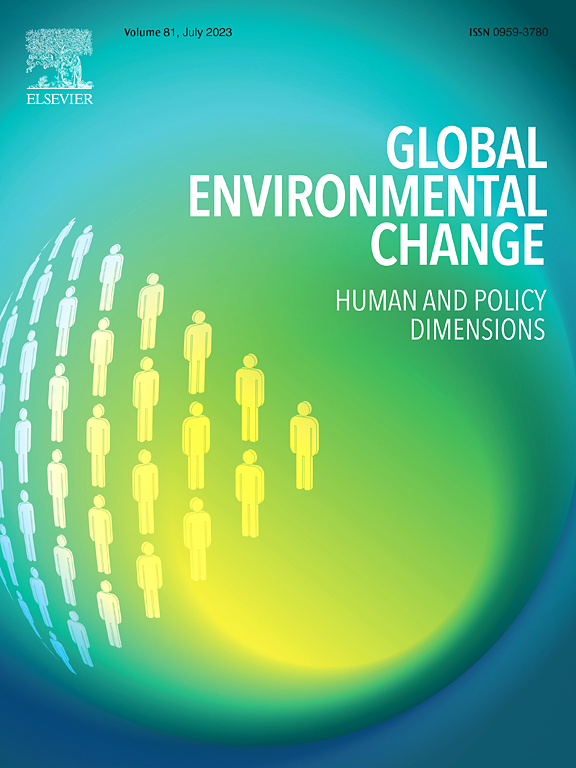生态恢复的环境状态:三个监管案例的制度分析
IF 9.1
1区 环境科学与生态学
Q1 ENVIRONMENTAL SCIENCES
引用次数: 0
摘要
在整个澳大利亚,社会生态系统正在衰退。生态恢复已被确定为扭转这种下降的关键过程,但生态恢复后社会生态系统的恢复是罕见的。由于生态恢复既是一种自然科学实践,也是一种社会实践,监管框架在促进或阻碍恢复方面发挥着关键作用。本文通过对澳大利亚三个监管案例的多层次制度分析,研究了生态恢复监管空间中的机构如何实现恢复,并确定了监管工具的驱动因素。制度分析的结果显示了生态恢复监管中的一个悖论,即监管框架实际上是导致低恢复率的原因。生态恢复通常受到与土地退化相同的监管框架的监管,监管系统继续阐明土地退化活动的价值,而生态恢复是避免国家责任的一种方式。因此,监管改革的驱动因素往往以市场为导向。这些发现都证明了所谓的环境国家;也就是说,现代国家处理社会生态问题的方式只会继续加剧土地退化。尽管国家、国家机构和监管机构在社会生态系统管理中发挥着核心作用,但在解决社会生态复原力和适应问题的研究中,它们的作用往往被忽视。本文通过对澳大利亚生态恢复监管的实证分析,增加了解决这一研究差距的日益增长的奖学金。本文章由计算机程序翻译,如有差异,请以英文原文为准。
The environmental statehood of ecological restoration: An institutional analysis of three regulatory case studies
Throughout Australia, social-ecological systems are in decline. Ecological restoration has been identified as a key process for reversing this decline, but the recovery of social-ecological systems following ecological restoration is rare. As ecological restoration is a social practice as much as it is a natural science practice, regulatory frameworks have a key role to play in either promoting or impeding recovery. This paper investigates how institutions in the regulatory space for ecological restoration approach recovery and identifies the drivers for regulatory instruments through a multi-level institutional analysis of three regulatory case studies across Australia. The findings from the institutional analysis demonstrate a paradox in the regulation of ecological restoration as it shows that the regulatory frameworks are actually contributing to low recovery rates. Ecological restoration is often regulated by the same regulatory frameworks that regulate land degradation and the regulatory systems continue to articulate the value of land degrading activities, with ecological restoration a way of avoiding state liability. Drivers for regulatory reform are then often market orientated. These findings all demonstrate what has been called an environmental statehood; that is, the way in which modern states engage with social-ecological issues, only continues to reinforce land degradation.
The role of the state, state institutions and regulation is often overlooked in studies addressing socio-ecological resilience and adaptation, despite the central role of these institutions in the management of socio-ecological systems. This paper adds to the growing scholarship that addresses this research gap by contributing an empirically informed analysis of the regulation of ecological restoration in Australia.
求助全文
通过发布文献求助,成功后即可免费获取论文全文。
去求助
来源期刊

Global Environmental Change
环境科学-环境科学
CiteScore
18.20
自引率
2.20%
发文量
146
审稿时长
12 months
期刊介绍:
Global Environmental Change is a prestigious international journal that publishes articles of high quality, both theoretically and empirically rigorous. The journal aims to contribute to the understanding of global environmental change from the perspectives of human and policy dimensions. Specifically, it considers global environmental change as the result of processes occurring at the local level, but with wide-ranging impacts on various spatial, temporal, and socio-political scales.
In terms of content, the journal seeks articles with a strong social science component. This includes research that examines the societal drivers and consequences of environmental change, as well as social and policy processes that aim to address these challenges. While the journal covers a broad range of topics, including biodiversity and ecosystem services, climate, coasts, food systems, land use and land cover, oceans, urban areas, and water resources, it also welcomes contributions that investigate the drivers, consequences, and management of other areas affected by environmental change.
Overall, Global Environmental Change encourages research that deepens our understanding of the complex interactions between human activities and the environment, with the goal of informing policy and decision-making.
 求助内容:
求助内容: 应助结果提醒方式:
应助结果提醒方式:


